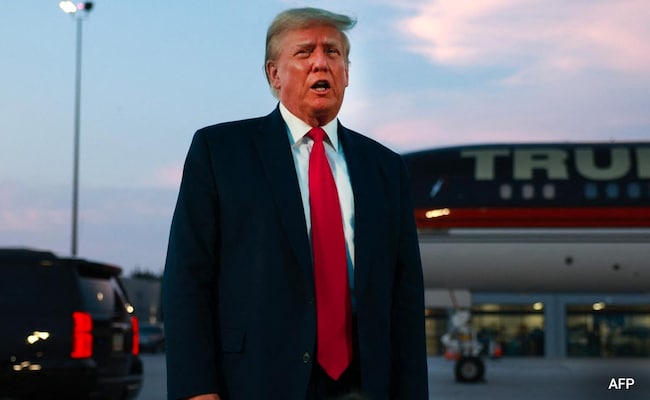Former US President Donald Trump unexpectedly departed from his usual anti-immigrant rhetoric when he proposed that foreign graduates of US institutions ought to be granted green cards as part of their degrees. Trump said these things during a podcast discussion with internet investors and venture capitalists that David Sacks sponsored and which aired on Thursday.
This proposal marks a significant shift from the restrictions he enacted during his presidency on immigration by high-skilled workers and students. The announcement also comes days after US President Joe Biden unveiled plans for a large-scale immigration programme that would provide a pathway to citizenship for immigrants married to American citizens.
Automatic green cards for graduates
Trump stated that graduates from any college, including junior colleges, should receive green cards automatically upon graduation. He emphasised the need to retain talented individuals in the US to support the economy.
“You graduate from a college, I think you should get automatically, as part of your diploma, a green card to be able to stay in this country, and that includes junior colleges,” he said.
Trump attributed his inability to implement this policy during his presidency to the need to “solve the Covid problem”.
Aggressive vetting process for graduate green card applicants
Following the interview, Trump’s campaign press secretary, Karoline Leavitt, clarified that there would be an “aggressive vetting process” for green card applicants, excluding individuals deemed detrimental to US interests.
“Exclude all communists, radical Islamists, Hamas supporters, America haters and public charges” and that the policy would apply only to the “most skilled graduates who can make significant contributions to America,” Leavitt said, as reported by The New York Times (NYT).
Potential impact of Trump’s new graduate green card stance
If enacted, this policy could significantly increase the number of green cards issued, as the US hosts roughly one million international students annually, predominantly from China and India.
Contradiction to Trump’s past immigration stance
This proposal contrasts sharply with Trump’s previous actions, such as the “Buy American and Hire American” executive order, which aimed to restrict business visas to the highest-paid or most skilled applicants. During his presidential term, Trump implemented several measures to restrict both legal and illegal immigration, including the travel ban on predominantly Muslim countries and proposals to cut legal immigration by half.
Reactions to Trump’s Announcement
Trump’s proposal has elicited mixed reactions, particularly given his history of strict immigration policies. According to a report by NYT, while some see it as a positive step towards retaining top talent, others view it as inconsistent with his past actions and rhetoric.
President Joe Biden’s new immigration programme
US President Joe Biden unveiled a large-scale immigration programme on Tuesday aimed at providing legal status and a pathway to residency and citizenship for approximately half a million unauthorized immigrants married to American citizens. He is also looking to introduce programmes to better streamline the work visa process for college graduates, including Deferred Action for Childhood Arrivals (DACA) recipients.
This initiative also represents a significant shift in US immigration policy and aims to streamline the process for immigrants who have been in the country for a long period.
“Today I’m announcing a common sense fix to streamline the process for obtaining legal status for immigrants married to American citizens who live here and have lived here for a long time,” President Biden said from the White House. “For those wives or husbands and their children who have lived in America for a decade or more but are undocumented, this action will allow them to file the paperwork for legal status in the United States.”
Key points of Biden’s immigration programme
The programme will allow unauthorised immigrants who have been married to American citizens and have lived in the US for at least 10 years to apply for work permits and deportation protections. Applicants must also pass a criminal background check and have been legally married to their American citizen spouse by June 17.
For work visas, individuals must secure a job offer in a field related to their studies. The programme will not change requirements for work visas like the H-1B, but will work to make it easier and faster.
What is the current immigration law in the United States?
Laws in the United States are enacted by Congress. Matters of immigration, visas, and citizenship come under the Immigration and Nationality Act (INA).
US immigration law falls under four main principles: reunification of family, employment or skill-based immigration (this includes H-1B visas), asylum or protecting refugees, and promoting diversity.
Under existing federal law, immigrants who enter the US illegally are generally required to leave the country and then re-enter legally to become eligible for a green card. Biden’s new programme circumvents that requirement, allowing for a more streamlined process.
For the financial year 2024, approximately 34.7 million people have applied for green cards, but only around 1.1 million applications are expected to be approved, according to the American public policy research organisation Cato Institute. This means only 3 out of every 100 applicants will be granted a green card, highlighting the competitive and complex nature of the US immigration system.
What is a green card?
A green card, officially known as a Permanent Resident Card, grants the holder permanent resident status in the US. This status allows individuals to live and work indefinitely in the country and provides a pathway to US citizenship after a specified period (typically 3-5 years).
The processing time for a green card varies widely. According to Boundless, an American firm that provides immigration services and resources, the current wait for spouses and immediate relatives of US citizens applying from within the United States is 10–23 months. Those applying from outside the US face a wait of 13.5–15 months, while other green card categories may have significantly longer wait times due to country caps.
Get the latest news updates and stay informed with FELA NEWS!
Source: Business Standard

